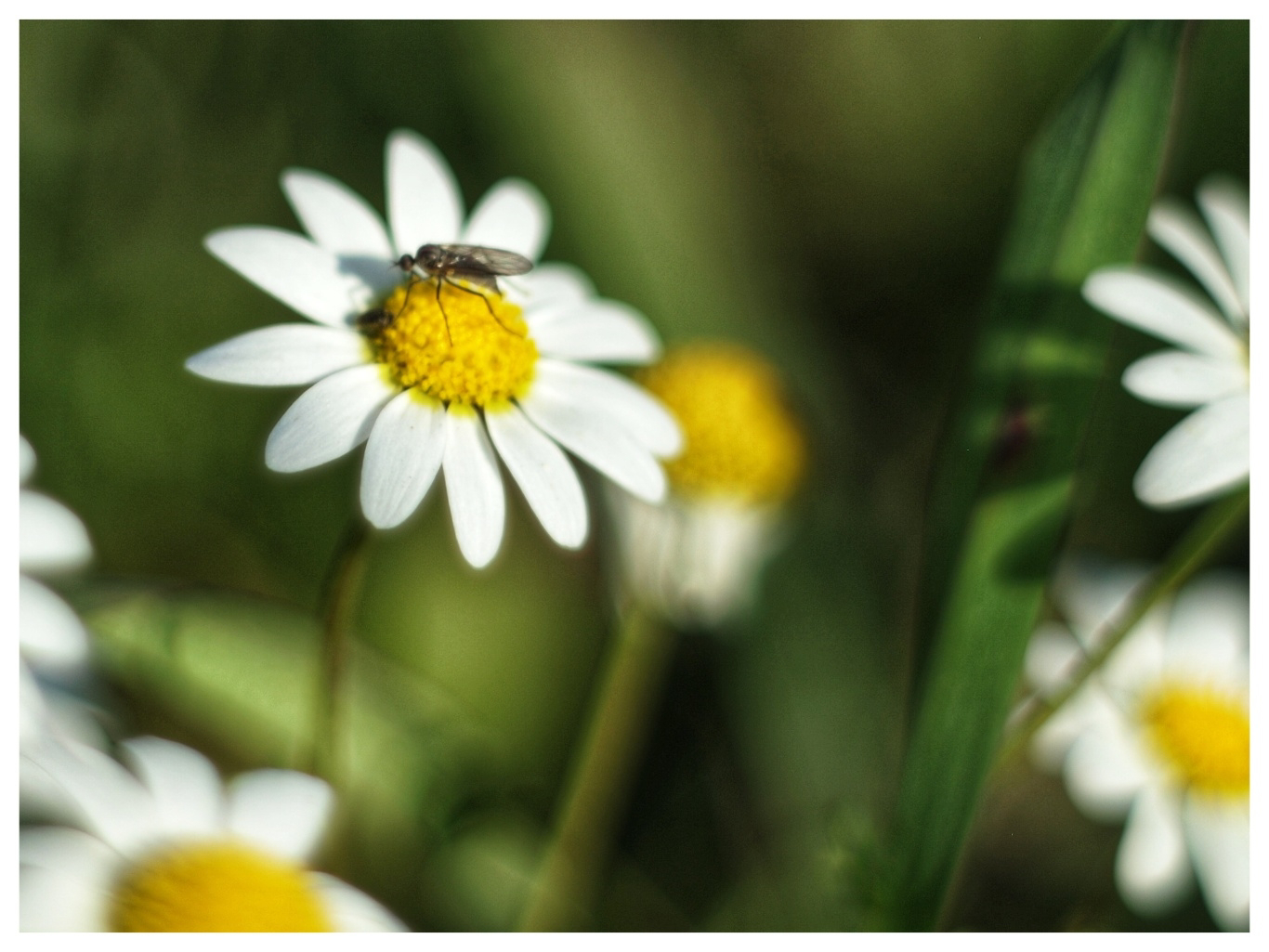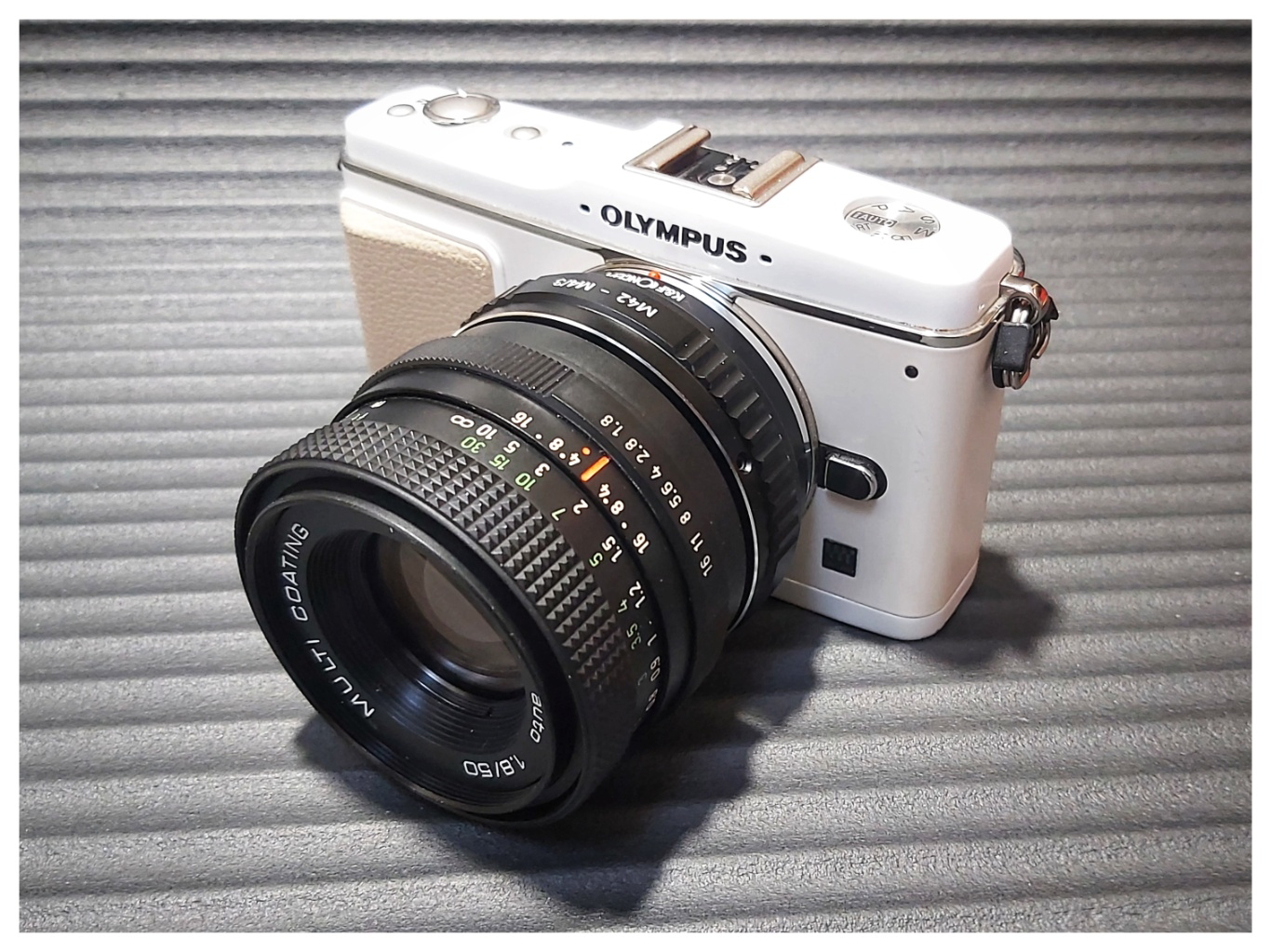#Jankuary: A prime lens from the 80s with a mirrorless camera from 2009, 31 January 2024
#Jankuary: A prime lens from the 80s with a mirrorless camera from 2009, 31 January 2024
I was a late entry to the world of mirrorless cameras, in fact I only picked up my first one, an Olympus Pen E-PL1, just over a year ago. It was dirt cheap and came with broken image stabilization, but I wasn't too bothered by this, the idea was to try some intentional camera movement and I thought the lack of image stabilization might complement this nicely.
Roll on a year (and a bit) and I now have three Olympus Pen mirrorless cameras. The most recent addition is also the nicest. The Pen E-P1 was the first micro four-thirds camera produced by Olympus in 2009, and quite frankly it's my favourite. Like the others it has a 12MP CMOS sensor, but it is set apart by the beauty of it's design. With its white livery and clean lines, it also has some lovely little design touches like 'Olympus Pen since 1959' etched into the body, a style its successors in the EP series are sadly lacking.
I don't have 'proper' lenses for the mirrorless cameras but I do have a nice little collection of odd lenses, like the Lomography Experimental Lens Kit and the Thingyfy Pinhole Pro. Recently I have added some Pentax 110 SLR lenses and today's Jankuary offering, the Pentacon Auto 50mm f1,8 lens.
Produced from about 1970 until about 1990 the Pentacon Auto 50mm was produced in the former East Germany and was a prime lens for cameras like the low budget Praktica SLRs. There were a number of models and I suspect my particular Pentacon dates from the 1980s. Although the glass was in nice condition the aperture is stuck in the fully open position. I have tried to fix it a couple of times but without success. However, for my needs even fully open is perfectly usable.
I have an M42 to micro four-thirds adapter to connect the lens to the mirrorless camera and this works nicely with the Olympus. As I can't change the aperture, I set the camera to manual mode and toggle the shutter speed to get the exposure I'm looking for. Also, the adapter is quite wide, so it shifts the focus from what the lens suggests is the focal distance to something a little shorter. In this respect it acts a little like an extension tube, which is great for macro images.
Since the Pentacon Auto 50mm lens is designed for use with a 35mm camera it's designed for an image size of 24mm x 36mm. However, the sensor of the micro four-thirds camera is smaller than this, at 18mm × 13.5mm, so only a part of an image will fill the sensor. What this means is that roughly a 50mm lens on 35mm is equivalent to a roughly 100mm lens on a micro four-thirds camera. It also means that I will probably lose all that lovely swirly bokeh around the edge of the frame — but thems the breaks.
Before I took out the Olympus Pen E-P1 for my Jankuary session with the Pentacon I gave the lens a good clean and made one last attempt to fix the faulty aperture. Again this was a failure and so I cut my losses, but I did try to reverse the rear element to try and give the images that 'dreamy' look.
It was a lovely sunny afternoon, with just a little haze in the sky remaining from the sandstorms in the Sahara that have left dust in the skies over a lot of Portugal. I found a fair number of subjects to try the lens with, through nowadays my focusing can be a little dodgy even with glasses. That's why I like auto focus for close-up work, if I can. However, I was really happy with the results that I got and the depth of field of the Pentacon wide open is so narrow.
Although this is the end of Jankuary, I still have a fair number of things 'on the boil' that fit the bill for what Jankuary was inspired to promote. So I think that from time-to-time I'll keep on using the hashtag for a while.
#Jankuary, #Olympus, #EPL1, #Mirrorless, #MicroFourThirds, #OlympusPen, #Pentacon, #Adapter, #Macro, #Experimental, #VintageLens,

















Comments
Post a Comment